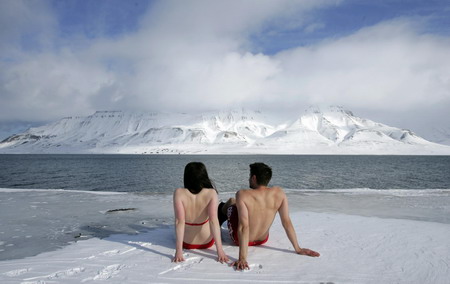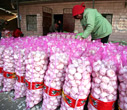Science and Health
CO2 curve ticks upward as key climate talks loom
(Agencies)
Updated: 2009-11-24 14:22
MAUNA LOA OBSERVATORY, Hawaii: The readings at this 2-mile-high (3-kilometer-high) station show an upward curve as the world counts down to climate talks: Global warming gases have built up to record levels in the atmosphere, from emissions that match scientists' worst-case scenarios.
Carbon dioxide concentrations this fall are hovering at around 385 parts per million, on their way to a near-certain record high above 390 in the first half of next year, at the annual peak.
"For the past million years we've never seen 390. You have to wonder what that's going to do," said physicist John Barnes, the observatory director.
One leading atmospheric scientist, Stephen Schneider, sees "coin-flip odds for serious outcomes for our planet."
Far from this mid-Pacific government observatory, negotiators from 192 nations gather in wintry Copenhagen, Denmark, next month to try to agree on steps to head off the worst of the climate disruptions researchers say will result if concentrations hit around 450 parts per million?- in 30 years at the current rate. Some say the world has already passed a danger point, at 350 ppm, and must roll back.
The UN expert group projects that such a path would raise global temperatures between 2.4 and 6.4 degrees Celsius (4.3 and 11.5 degrees F) by century's end. That would come on top of a global temperature increase of about 0.6 degrees Celsius (1 degree Fahrenheit) in the past century, a warming trend the authoritative IPCC says is mainly due to the buildup of carbon dioxide and other greenhouse gases.
Such warming will shift climate patterns, cause more extreme weather events, spread drought and floods to new areas, kill off plant and animal species, and cause seas to rise from heat expansion and the melting of land ice, the IPCC says.
"Changing several degrees may not seem like much, but we're just changing things too fast," Barnes said. "So the consequences could well be drastic."
The IPCC has urged industrialized countries to reduce global emissions by 25 to 40 percent below 1990 levels by 2020. As of 2007, they stood only 4 percent below 1990 levels, and the rest of the world continued pouring out more and more heat-trapping gases, chiefly from the burning of coal, gasoline and other fossil fuels.
Experts see no sign of a slowdown.
It would "probably be at 390 (ppm) next year at Mauna Loa," said Fred T. Mackenzie, a professor emeritus of oceanography at the University of Hawaii at Manoa. That would represent almost a 40-percent increase in carbon-dioxide density in the atmosphere since before the industrial age and extensive use of fossil fuels.
Schneider, a Stanford University climatologist, said the world faces a huge risk.
"I think meters of sea-level rise are virtually inevitable, unless we can stop this. But I'm not such an optimist," he told journalists on a fellowship program with the Honolulu-based East-West Center. "The main message is we're in risk management. We do not know the science well enough to know exactly what the temperature is at when a tipping point will occur."
This US government observatory, 11,141 feet (3,396 meters) up Mauna Loa's northern flank, also measures methane and other significant greenhouse gases. It was here on Hawaii's Big Island that climatologist Charles David Keeling pioneered the measurement of carbon dioxide in the atmosphere, installing his experimental manometer on the gently sloping volcano in 1958.
He chose the site, already a US Weather Service station, because the trade winds blowing over it had some of the cleanest air on the planet. Barnes said the CO2 measurements here, thousands of miles from major industry, were the first to show that manmade carbon dioxide emissions were accumulating throughout the global atmosphere.
The upward trend, averaging 1.9 parts per million per year in the past decade, undergoes seasonal fluctuations. In summer, during the growing season, plants absorb carbon dioxide from the atmosphere. But in winter, the concentration of C02 rises as vegetation and other biomass decompose.
The observatory is part of the National Oceanic and Atmospheric Administration's worldwide network for measuring greenhouse gases. It coordinates measurements with other US-run research stations in Alaska, California, American Samoa and the South Pole. Japan and Australia also run such networks.
The Mauna Loa researchers extend their measurements through their "flask network"?- containers sent to dozens of places around the world each week or carried on commercial ships so people can fill them with air and send them back to be measured for C02 and other gases.
Barnes, watching the carbon dioxide "ppm" curve track ever upward on Mauna Loa, while some other greenhouse gases decline, noted that long-lived CO2 is "more and more the bigger player."
"It is going into the ocean, and there's some plant uptake, but a whole lot of it just goes into the air and it's going to stay there for thousands of years," he said.













